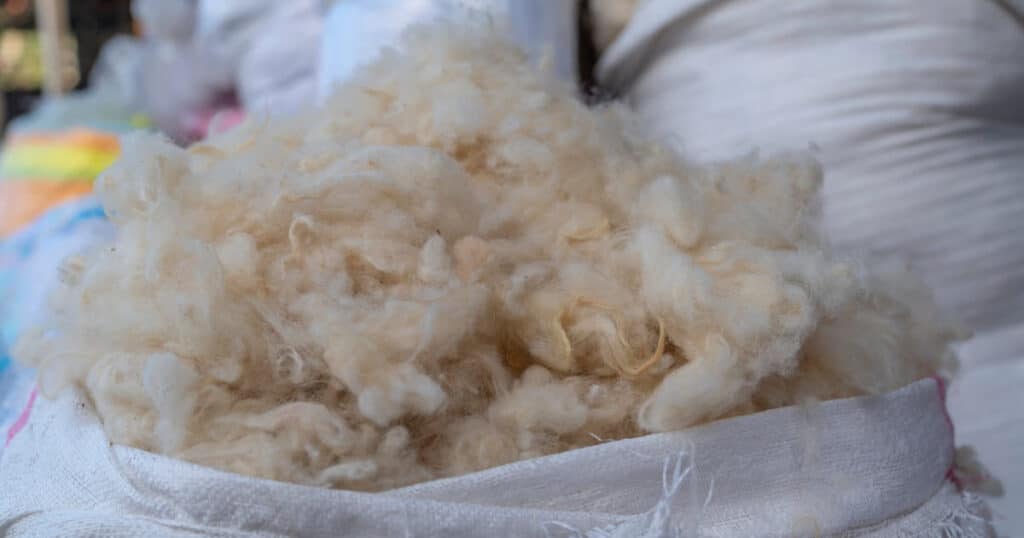Of all the textile fibers in the world, sheep wool is one of the best known. Perhaps you even have some well-loved wool sweaters in your closet. But have you ever wondered about the value of wool? Keep reading to find out the answer to the question, how much is sheep wool worth?
The value of wool fluctuates with supply and demand. To understand the value of wool, you need to understand the wool market and wool production. In 2018, the wool trade all over the world was valued at a total of 4.72 billion USD. Overall, wool is commanding high prices at the moment. One reason for this is increasing demand in China and growing economies.
Wool Quality and Type Affects Value
The value of sheep wool frequently changes, and it depends on the locations where the wool is produced, sheared, and sold. Of course, wool quality and type also play a major role in determining value.
The price a sheep producer can command for a fleece (the wool from one sheep) will depend not only on the type of wool, but also on whether it is raw or washed.
Raw fleece commands much less money than washed fleece.
For example, in 2018 the general price range for a pound of raw wool was between $10 and $25. A pound of washed wool, however, ranged from $35 all the way to $64.
Wool is graded into different categories based on texture. Certain kinds of sheep produce fine wool, while others grow medium and coarse wools. There are also long-wool varieties of sheep.
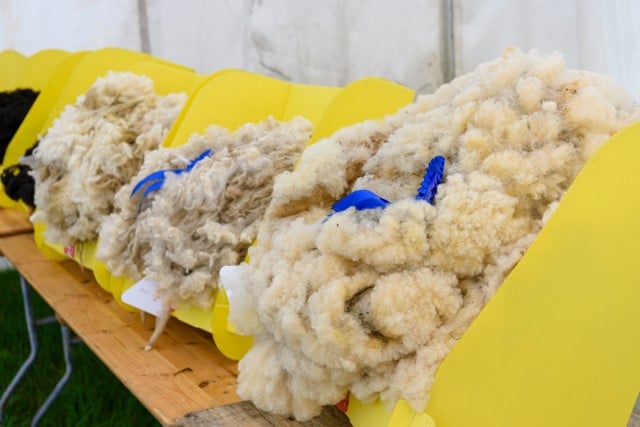
Fine-textured wools are used in clothing, and the finest wools are generally used in expensive garments, such as men’s suits and high-end sweaters.
As mentioned earlier, wool prices change frequently. However, one constant is that some types of wool are generally more expensive, or even a lot more expensive, than others. Let’s take a look at some expensive types of sheep wool.
Lambswool
Have you ever heard of “virgin wool.” This is lambswool.
It’s wool from baby sheep, specifically from the first ever shearing. This usually takes place when a baby sheep is less than a year old.
We prize lambswool for several reasons. One of these is its extraordinary softness, as well as its smooth texture.
Extraordinarily, lambswool is hypoallergenic. If you have a wool allergy, lambswool is something to consider.
You’ll have to be ready to pay though, as this is a pricey wool type.
Lambswool is an especially valuable commodity and you must handle it delicately. Harvesting lambswool is a bit more labor intensive than regular wool, as your shearers will have to be more careful when dealing with lambs.
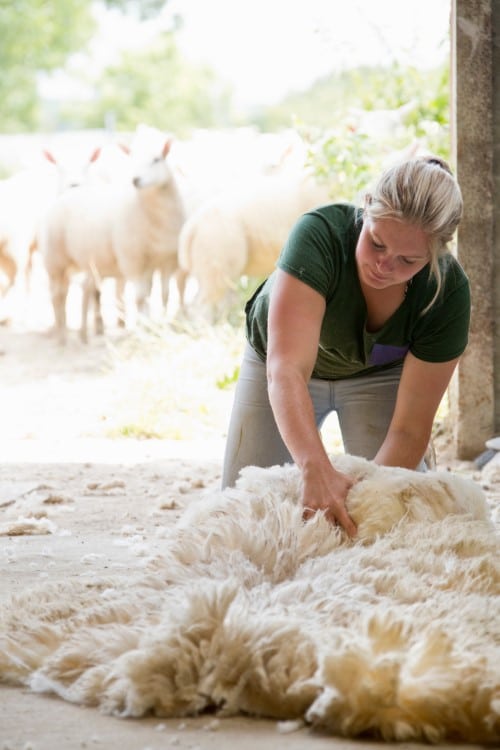
Also, as lambs are much smaller than full-grown sheep, you will have to shear more lambs to get the same amount of wool.
Merino
Merino wool is an extraordinarily soft and fine type of wool, taken from the Merino sheep breed. We prize this wool for how it can keep you comfortable in any kind of weather.
That is why we often see spring and summer attire made from Merino wool.
While the Merino sheep originally came from Spain, most of these sheep today are in New Zealand and Australia, where there are a large number of Merino sheep wool operations.
The market highly values Merino wool, and it fetches excellent prices. This is a fine wool, so you must handle it carefully.
Melton
Melton is a great choice if you want a wool that’s especially warm and durable.
This wool has thicker fibers. We value its hardiness and excellent moisture regulation properties.
Most Melton wool garments are a twill weave.
Shetland
Shetland wool comes from the Shetland sheep, specifically from its undercoat. This breed of sheep comes from the Shetland Islands of Scotland.
As these sheep live in a challenging climate and conditions, they grow wool that’s especially hardy and able to stand up to wear and tear.
One of the advantages of Shetland wool is that it comes in a wide range of colors.
A Shetland sheep farm is a highly specialized operation. You can only have this kind of farm if you live in a specific kind of climate and are able to cater to this sheep’s specific needs.
How is Wool Produced?
Of course, the first step of wool production is successfully raising and keeping healthy sheep.
You must shear your sheep annually.
Unless you’re an experienced shearer yourself, you’ll hire a professional to do this. There is quite a bit knowledge and skill behind the practice.
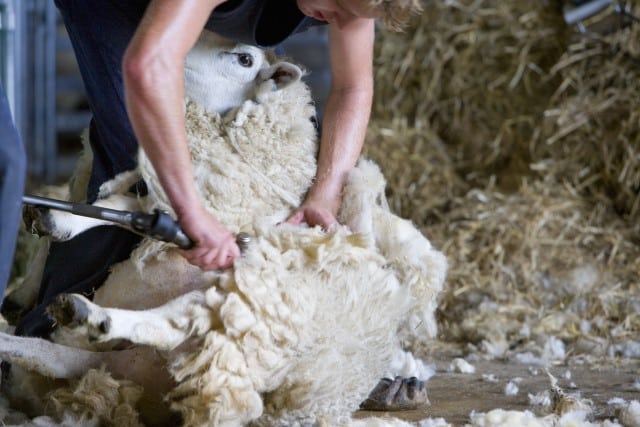
The wool from one sheep is called a fleece, and the average weight of a fleece in the US is 7 pounds. Once it is removed from the animal, you must sort and clean it.
The wool must also be carded and then spun. Other processes the wool is put through depend on its end use.
How is Wool Used?
There are many different uses for wool, which is why it’s such an important agricultural commodity. Wool is used for making not only clothing but also carpets, rugs, and furnishings.
The lanolin in wool is also extracted, to be used in beauty products for its moisturizing properties.
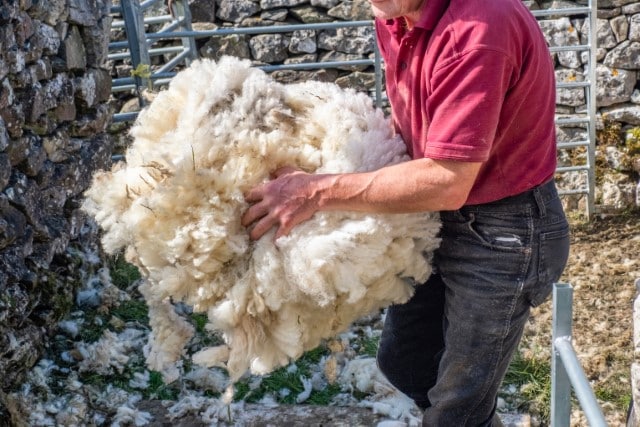
Wool in Clothing
When wool has a fine texture, it is usually used exclusively in clothing. Some examples of clothing where wool may be used include suits, sweaters, gloves, socks, coats, and other winter accessories.
Wool in Furnishings and Carpet
When wool has a thicker texture, it tends to be used in furnishings such as upholstery, mattresses, blankets, and other kinds of bedding. Carpets are usually made from coarse wools.
The World’s Important Wool Producing Countries
The top five countries for wool production around the world are Australia, China, the United States, New Zealand, and Argentina.
| Country | Annual Wool Production |
|---|---|
| Australia | 478,792 tons |
| China | 235,927 tons |
| United States | 150.873 tons |
| New Zealand | 102,457 tons |
| Argentina | 88,897 tons |
The fact that Australia is the top wool producing country in the world is why the value of its dollar plays a part in determining the value of wool.
Factors Affecting the Price of Wool
Like other kinds of commodities, the quantity of wool stocks impacts its value.
Another important factor is consumer preference. Changing fashions often impact the kinds of wool that are in demand at a given time.
When there is higher demand for a certain kind of wool, the prices tend to go up. Also, the demand for wool overall tends to fluctuate.
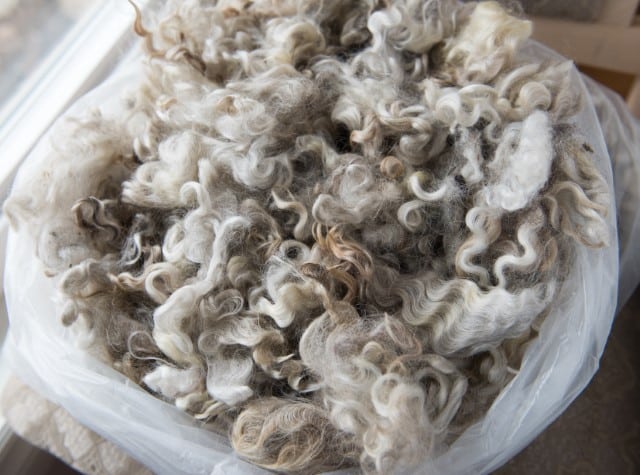
High-end men’s suits are made from fine wool. The more workplaces in a country demand that men wear suits to the office, the higher wool prices tend to go.
The value of the Australian dollar also has an effect on wool prices.
As Australia is the world’s biggest producer of wool, its dollar is used for pricing wool. This is different than most other commodities in the world, as the usual practice is to use the US dollar.
A fleece’s condition also impacts how much the producer can command. The fleece’s condition overall, as well as the microns (in other words, how fine or coarse the wool is) play a part.
Wool needs uniformly strong fibers in order to be viable. If the sheep have been stressed or ill, the fibers might break.
This is just one of many reasons why sheep producers must take appropriate care of their animals, ensuring they have proper care, shelter, and the right nutrition for wool production.
Farmers can take extra steps to keep sheep wool clean, as well.
Demand Changes from Year to Year
As a wool producer raising sheep for wool, you’ll have to be ready for changes in wool demand each year. Demand, of course, affects value and how much money you will get for your fleeces.
Different kinds of wool may have different levels of demand.
It’s difficult for sheep farmers and wool producers to be flexible and meet market demand. That is because you cannot constantly change the kinds of sheep you raise. as you cannot predict what kind of wool (and therefore, what kind of sheep) it would be most profitable to have at a given time.
How to Sell Wool You Produce
If you want to be a wool producer, you must know the different ways to sell your wool.
You can sell your wool to wool buyers or wool cooperatives.
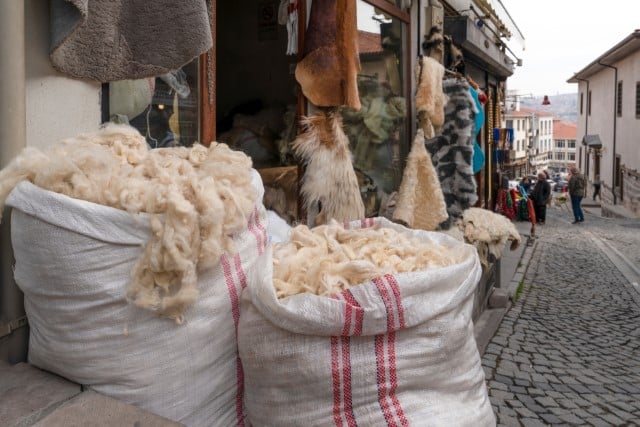
Most of the time, you will go with a wool buyer.
Spend time learning about different wool buyers and how much they offer. You don’t want to rush this process.
Hiring Professional Shearers
Most sheep farmers hire professional shearers to shear their sheep. Ensure you hire shearers with the right kind of training and experience.
This is essential, as inadequately trained and inattentive shearers may injure your sheep.
Your sheep shearer will need the proper shearing equipment. They’ll also have to thoroughly clean and disinfect the equipment before use.
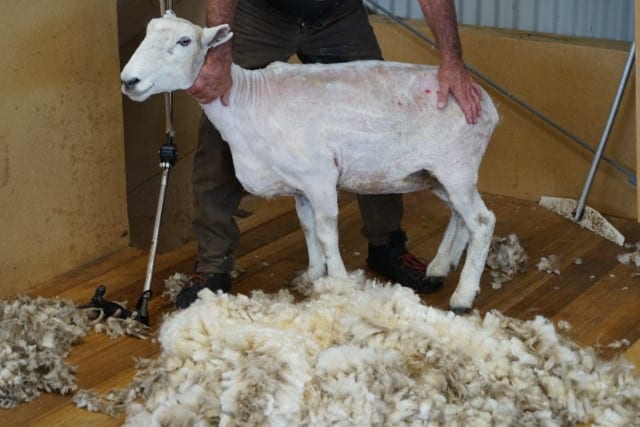
If that isn’t done, your sheep could end up with a potentially dangerous infection.
What About Specialty Wools?
Getting into specialty wools will earn you more money. Be aware, however, that most wool buyers aren’t interested in buying these wools.
There are other venues where you can find interested parties when it comes to specialty wools, particularly in hand-spinning communities.
How Much is Sheep Wool Worth? (it depends)
Now you understand how sheep wool pricing works, including the fact that this commodity’s value is constantly changing.
If you want to be a sheep farmer and produce wool, you’ll have to keep this in mind as you build and maintain your operation.

